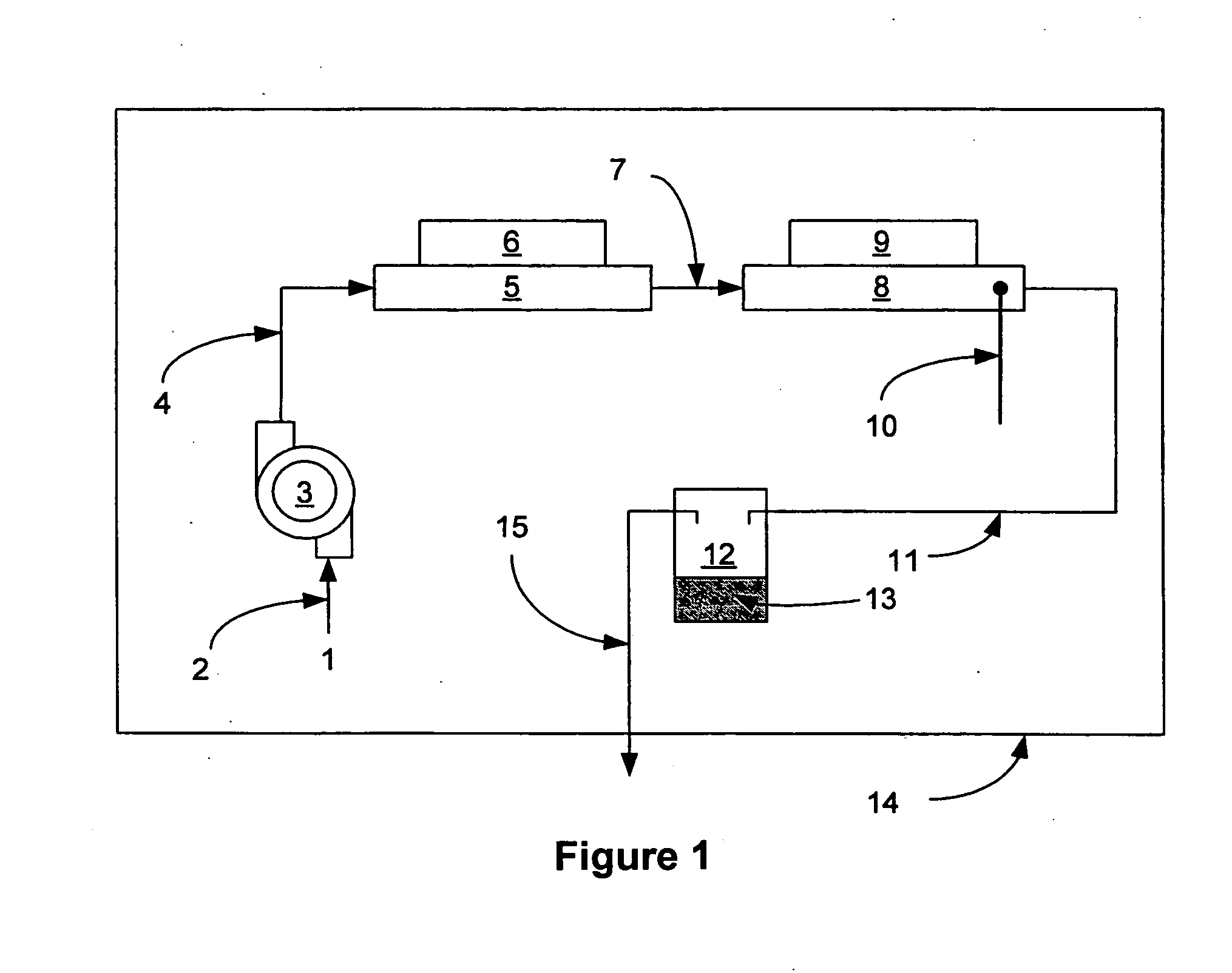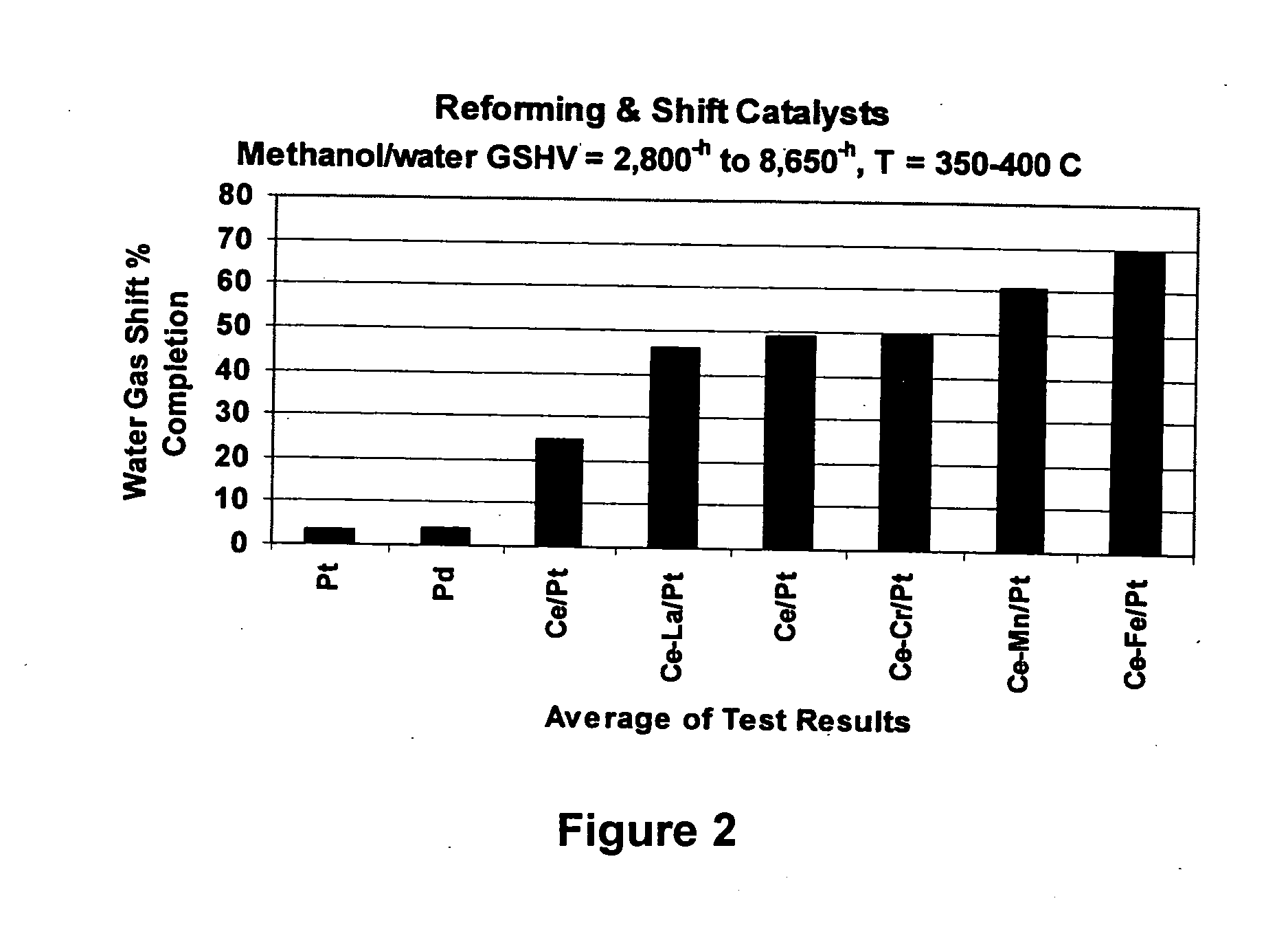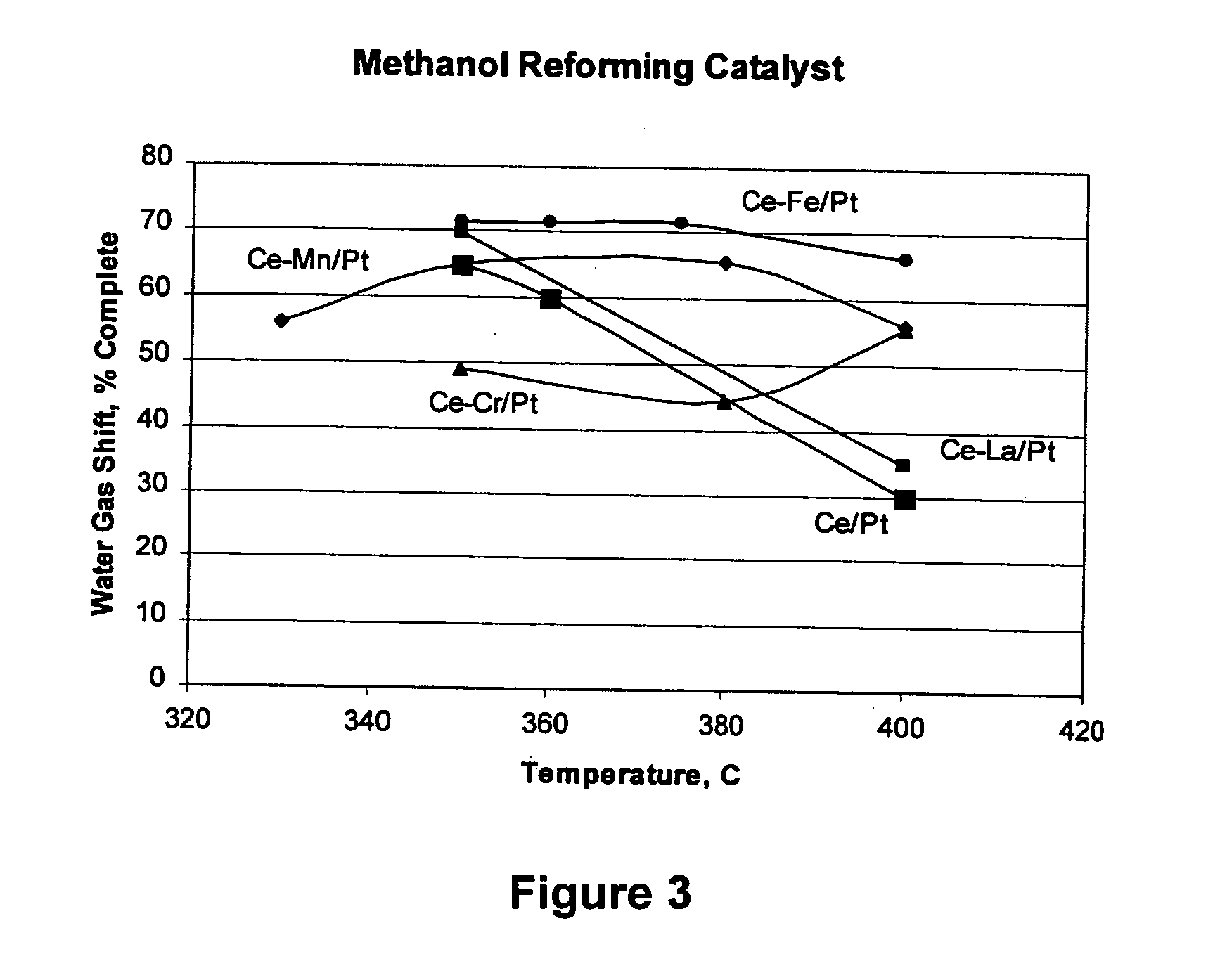Water-gas shift and reforming catalyst and method of reforming alcohol
a technology of catalyst and water gas, which is applied in the direction of physical/chemical process catalyst, metal/metal-oxide/metal-hydroxide catalyst, bulk chemical production, etc., can solve the problems of limited many demonstration projects to bottled hydrogen, poor long-term stability at higher temperatures, and continued problems such as hydrogen sources, etc., to achieve high active and durable effect, well-suited for us
- Summary
- Abstract
- Description
- Claims
- Application Information
AI Technical Summary
Benefits of technology
Problems solved by technology
Method used
Image
Examples
example 1
Pt / Alumina
[0036]⅛″ diameter alpha-Alumina spheres coated with a platinum loading of 1% were purchased from UEC (United Emission Catalyst, Atlanta, Ga.). The samples were not reduced prior to shipment. 50 cc of spheres were loaded into a ½″ diameter stainless steel tube. The feed gas hourly space velocity of methanol and water (25° C., 1 atmosphere pressure basis) was 2,827 h−1, with a pressure of 50 psig, and a catalyst exit temperature of 360° C. The decomposition and shift reactions ran to 96.8% and 3.6%, respectively.
example 2
Pd / Alumina
[0037] SAS 250 (Alcoa Vidalia Works, Vidalia LA) catalyst support, in the form of 1 / 16″ diameter alpha alumina spheres, were wash coated with a Pd-containing solution (Paladin RDX-1200, RD Chemical Company, Mountain View, Calif.), dried, and subsequently calcined at 750° C. 50 cc of catalyst were loaded into a ½″ diameter stainless steel tube. The feed gas hourly space velocity was 2,973 h−1 at 50 psig, and the catalyst exit temperature was set at 400° C. The decomposition and shift reactions were 90.3% and 4.0%, respectively.
[0038] Experiments 1 and 2 both confirm high activity of the Pd and Pt for the decomposition reaction, but poor activity for the water-gas shift reaction.
example 3a , 3
EXAMPLE 3a, 3b
Ce—La / Pt / Alumina
[0039] 1% Pt / alumina UEC catalyst (as Experiment 1) was wash coated with a solution containing cerium and lanthanum nitrate salts in a 9:1 ratio, respectively.
[0040] In sample “A”, prior to coating with the nitrate solution, the UEC catalyst was reduced at 400° C. in pure hydrogen for four hours, and cooled in hydrogen. The wash-coated sample was then dried and calcined at approximately 600° C. for over three hours in air. Weight percentage of the metals were Ce5.1La0.6 / Pt0.9 / Alumina (Weight percentage in all examples is the percentage of the metal as a fraction of the metals plus the support. Metals, such as cerium, lanthanum, and so forth, exist in the oxidized state after calcination, and may or may not reduce during active testing. Since the exact oxidation or reduction of the catalyst elements may not be known, catalyst formulations are listed in all the examples as a listing of the metallic elements and their weight percentages). 50 cc of the c...
PUM
| Property | Measurement | Unit |
|---|---|---|
| Temperature | aaaaa | aaaaa |
| Temperature | aaaaa | aaaaa |
| Temperature | aaaaa | aaaaa |
Abstract
Description
Claims
Application Information
 Login to View More
Login to View More - R&D
- Intellectual Property
- Life Sciences
- Materials
- Tech Scout
- Unparalleled Data Quality
- Higher Quality Content
- 60% Fewer Hallucinations
Browse by: Latest US Patents, China's latest patents, Technical Efficacy Thesaurus, Application Domain, Technology Topic, Popular Technical Reports.
© 2025 PatSnap. All rights reserved.Legal|Privacy policy|Modern Slavery Act Transparency Statement|Sitemap|About US| Contact US: help@patsnap.com



